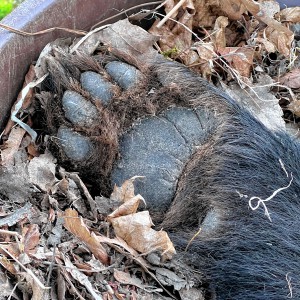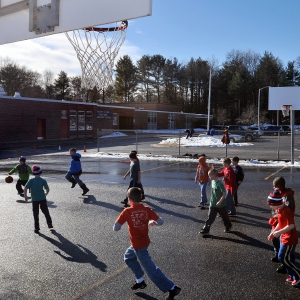Beware of jumping worms: Locals can help thwart invasive found in forests, gardens
| Published: 10-08-2021 2:38 PM |
Those of us lucky enough to live in western Massachusetts sometimes feel at least partly insulated from global crises. Of course, our region is not immune to challenges. Fortunately, the creativity that makes us the envy of visitors helps us find solutions to problems.
Many gardeners are familiar with the beneficial impacts of earthworms. Yet there’s a notable exception, and local citizens can help thwart a destructive and invasive species known as jumping worms, a nickname given to Amynthas agrestis, a variety of earthworm.
Jumping worms have been in the U.S. for decades, but are gaining attention due to their increasing numbers and a growing understanding of their destructive tendencies.
They’re like the billionaires of the worm world: jumping worms are shiny, firm and clean-looking, but they’re up to no good. They wreak havoc in the dark, and squirm wildly when you try to get ahold of them.
It turns out that garden-variety worms — the slimy, dull-colored characters — are the ones you can trust. All earthworms are segmented and have a clitellum (a band or collar). Most local earthworms belong to the Lumbricidae family, but jumping worms belong to the Megascolecidae family.
Worry not, dear readers: despite two Latin terms in the preceding paragraph, there will not be a test. Please keep reading, because you can make a difference when it comes to jumping worms. While we’re not likely to eradicate the pests, we can mitigate their spread and limit the damage they do to local forests, parks and gardens.
The University of Massachusetts Amherst’s Center for Food, Agriculture and the Environment recently published two fact sheets about the spread of invasive earthworms, noting that jumping worms alter soil qualities, particularly in forested locations, and may even trigger changes that favor invasive plants in forest understories.
Some of the biggest impacts of jumping worms are evident in forest ecosystems. According to the UMass fact sheets, jumping worms consume the upper organic layer of soil, which can lead to erosion and nutrients being leached from the soil. This can have broader implications, because changes in forest soils can result in alterations in understory species composition in favor of invasive flora and fauna.
Article continues after...
Yesterday's Most Read Articles
 Holyoke man finds bear paw in his yard
Holyoke man finds bear paw in his yard
 Boyfriend accused in slaying of Hampden sheriff’s assistant, former legislator’s top aide
Boyfriend accused in slaying of Hampden sheriff’s assistant, former legislator’s top aide
 Three finalists named for Ryan Road School principal in Northampton
Three finalists named for Ryan Road School principal in Northampton
 Developer pitches new commercial building on Route 9 in Hadley
Developer pitches new commercial building on Route 9 in Hadley
 Two men dump milk, orange juice over themselves at Amherst convenience store
Two men dump milk, orange juice over themselves at Amherst convenience store
 Sadiq to leave Amherst middle school principal role
Sadiq to leave Amherst middle school principal role
Jumping worms can consume a critical layer of organic matter that also supplies nutrients vital to wildlife. Recent reports indicate that the worms cause reduction in the amount of leaf litter on the forest floor.
In addition, locals have noticed mulches rapidly disappearing from home gardens, including piles of wood chips decreasing unusually fast. The mystery is solved once jumping worms are spotted and identified.
UMass fact sheets assure citizens that jumping worms are not directly harmful to people or pets, despite the fact that they thrash wildly when disturbed, reminding people of snakes.
For Amy Pulley, proprietor of Wing and a Prayer nursery in Cummington, the discovery on her property of one jumping worm in August “utterly changed my life. I cried when I saw it, and immediately wondered if I’d have to close my nursery. But I’ve learned mitigation techniques and, at this point, just want to keep the worms out of my pots. It’s all about damage control.”
Pulley and other local horticulturists believe that the arrival of jumping worms brings a message.
“It’s one of many planetary changes that makes us wonder about the implications of our actions and habits,” she said. “It’s humbling. I feel it’s best to take a long view.”
Her fervent hope “is that people will take this in. Jumping worms represent a change I never would have chosen. But they’re here, so let’s be curious about what else we may be overlooking. What’s happening to our lands and bodies? We have to educate ourselves and take measured, intelligent approaches.”
Pulley emphasized that people who notice jumping worms in soil, compost, mulch and potted plants can respond with simple steps.
Covering a compost pile with plastic to heat materials to 104 degrees for up to three days can kill egg-containing jumping worm cocoons. Gardeners can also prevent the transit of jumping worms from one part of their property to another by not moving plants from an infested area to a non-infested area.
“Gardeners and property owners can clear out as many jumping worms by hand as possible,” Pulley said. “They’re found close to the surface, as opposed to other earthworms, which burrow more deeply into the soil.”
Pulley’s recommendation echoes advice from UMass: “Remove jumping worms when you see them. Simply seal them in a bag and throw it in the trash — they won’t survive long. Reducing the adult population will eventually reduce the number of egg-carrying cocoons in the landscape.”
UMass information indicates that jumping worms may also be disposed of into a bucket of vinegar or soapy water.
Another measure, according to Pulley, is to cover a plot of soil with clear plastic so it heats to at least 104 degrees Fahrenheit.
“Contrary to popular belief, clear plastic is better than black plastic,” Pulley said, “because it raises the temperature higher.”
Experts warn gardeners not to try to manage the worms with chemicals, as there are currently no approved substances designed for that purpose.
Given that our region is experiencing a significant outbreak of jumping worms, Pulley and others are determined to spread the word about facts, mitigation techniques and broader implications.
“If you find you have jumping worms, don’t share your mulch or compost,” Pulley said. “If you wish to share plants, wash the roots carefully and replant in sterile potting soil before selling or giving them away.”
One difference between jumping worms and other kinds is that beneficial earthworms can live up to 10 years and survive our winters by burrowing deeply and waiting out frigid temperatures. Conversely, mature and juvenile jumping worms are not cold tolerant and die within a year. The crux of the problem, however, is that their cocoons can overwinter, allowing the next generation to hatch in the spring.
Unfortunately, jumping worms are difficult to notice in the spring. Cocoons are small, eggs are about the size of a poppy seed, and the immature worms can be tiny. They become noticeable — if searched for — in mid to late May.
UMass fact sheets point out that the first adult jumping worms appear by the end of May or early June, but numbers are low and infestations are rarely noticed at that time. Apparently, it’s easy to misidentify them early in their life cycle. Most observations of fully mature jumping worms occur in late summer.
To spot jumping worms, look for critters that are smooth, glossy and dark grayish brown in color. A mature jumping worm is 4 to 5 inches long, with a clitellum that’s cloudy white to gray in color, unlike the pinkish clitellum of beneficial earthworms.
Another key identifier: in jumping worms, the clitellum is flush with the rest of the body and wraps completely around, unlike in a beneficial earthworm, where the clitellum is raised and wraps only partly around the body, like a saddle. And in jumping worms, the clitella are found closer to the head than those of beneficial earthworms.
UMass sources note that “mature nightcrawlers can be 6 to 8 inches in length, and have thick, slimy and floppy bodies. They wiggle and stretch when disturbed, and do not tend to thrash violently or move in a snake-like manner. They can be perceived as slow and sluggish compared to Amynthas spp. (jumping worms).”
According to UMass sources, since jumping worms have been in western Massachusetts for decades, there’s no need to report them, even though they’re gaining attention.
People who learn to identify jumping worms can help others do so, as well. This applies not only to gardening, but recreational fishing. The more people who know not to purchase jumping worms for composting or for bait, the better the outcome.
For those who want more detailed information, an online symposium is planned for January. (There will be a fee.) Check UMass events: ag.umass.edu/upcoming-events in November.
Eveline MacDougall is the author of “Fiery Hope” and an avid gardener. She has learned to identify jumping worms and has dispatched quite a few in soapy water. She welcomes feedback and tips about other column topics: eveline@amandlachorus.org.
 Valley Bounty: Grass-fed animals that feed the grass: Gwydyr Farm in Southampton focuses on ‘restoring the connection between land, food and people’
Valley Bounty: Grass-fed animals that feed the grass: Gwydyr Farm in Southampton focuses on ‘restoring the connection between land, food and people’ Weekly Food Photo Contest: This week’s winner: Mary Chicoine of Easthampton
Weekly Food Photo Contest: This week’s winner: Mary Chicoine of Easthampton  Speaking of Nature: A romantic evening for two birders — To hear the wonderful sounds of the Saw-whet Owl one must go outside at night
Speaking of Nature: A romantic evening for two birders — To hear the wonderful sounds of the Saw-whet Owl one must go outside at night Speaking of Nature: Where have all the birds gone?: They’re there, and here’s a handy tool to keep track of their appearances
Speaking of Nature: Where have all the birds gone?: They’re there, and here’s a handy tool to keep track of their appearances
